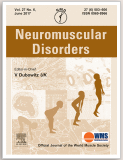 Spinal muscular atrophy type 1 (SMA1) is the leading genetic cause of infant mortality for which therapies, including AVXS-101 (onasemnogene abeparvovec, Zolgensma®) gene replacement therapy, are emerging.
Spinal muscular atrophy type 1 (SMA1) is the leading genetic cause of infant mortality for which therapies, including AVXS-101 (onasemnogene abeparvovec, Zolgensma®) gene replacement therapy, are emerging.
This study evaluated the effectiveness of AVXS-101 in infants with spinal muscular atrophy type 1 (SMA1) compared with a prospective natural history cohort and a cohort of healthy infants.
Twelve SMA1 infants received the proposed therapeutic dose of AVXS-101 (NCT02122952). Where possible, the following outcomes were compared with a natural history cohort of SMA1 infants (n = 16) and healthy infants (n = 27) enrolled in the NeuroNEXT (NN101) study (NCT01736553): event-free survival, CHOP-INTEND scores, motor milestone achievements, compound muscle action potential (CMAP), and adverse events.
Baseline characteristics of SMA1 infants in the AVXS-101 and NN101 studies were similar in age and genetic profile. The proportion of AVXS-101-treated infants who survived by 24 months of follow-up was higher compared with the NN101 study (100% vs 38%, respectively). The average baseline CHOP-INTEND score for NN101 SMA1 infants was 20.3, worsening to 5.3 by age 24 months; the average baseline score in AVXS-101-treated infants was 28.2, improving to 56.5 by age 24 months. Infants receiving AVXS-101 achieved motor milestones, such as sitting unassisted and walking. Improvements in CMAP peak area were observed in AVXS-101-treated infants at 6 and 24 months (means of 1.1 and 3.2 mV/s, respectively).
In this study, AVXS-101 increased the probability of survival, rapidly improved motor function, and enabled motor milestone achievement in SMA1 infants.
